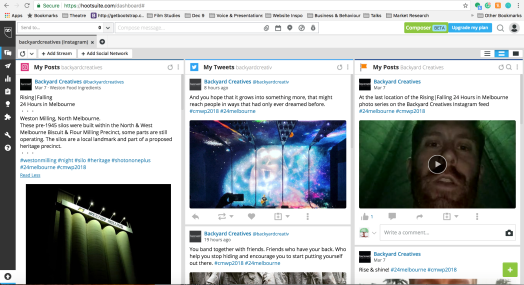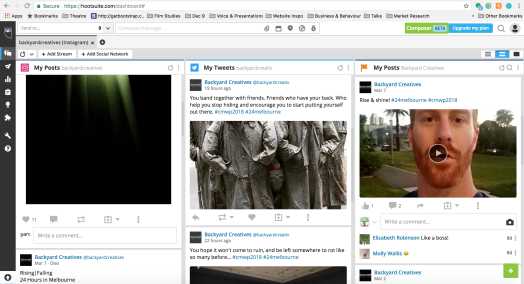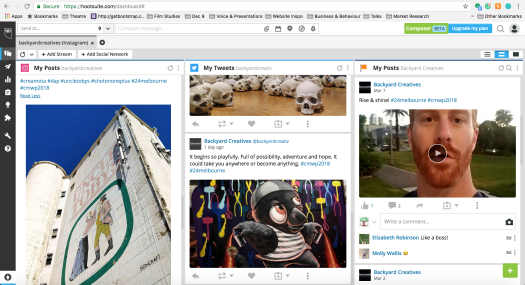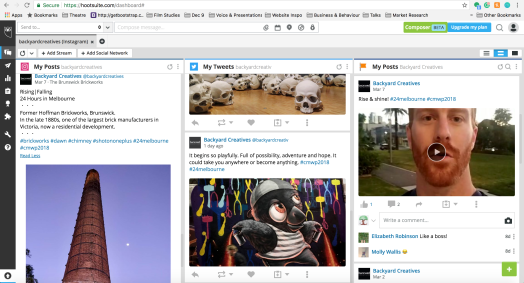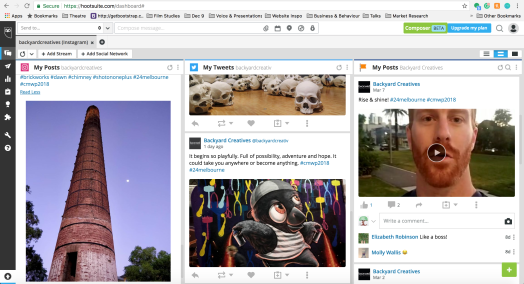There is so much digital content available for consumption and most people have relatively easy access to technology to create this content, however, high production values do not seem to be a prerequisite for audiences. As long as the content is of interest, and able to be downloaded or buffered, users are willing to engage with it (Dobrian et al. 2011). The online video with the second most views over the first 24-hours is known as Chewbacca Mask Lady, reaching 50 million views in a day (Parker 2016). It was originally recorded and posted to Facebook by Candace Payne while sitting in her car. While this example is definitely an outlier, I’m curious about the relationship between perception of quality and user engagement.
Audio First for Audiovisual
In support of content over quality, if the audio is of poor quality and the information cannot be heard, it creates a big barrier for audiences to engage (Beerends & De Caluwe, cited in Harrell n.d.). This definitely aligns with the findings of Dobrian et al. (2011) where audiences are willing to sacrifice video quality (to a certain extent) as long as they are interested in the content. If the audio quality isn’t perfect, videos can be helped by using subtitles, Ashraf (2016) found that ‘78.2% of all views are silent’. This is all in services of making it easier for audiences to understand the creator’s intended message.
Amateur Hour
The internet and social media have provided an open platform for users to share their digital creations and Jenkins (2006 p. 136) identifies its value for amateur storytellers:
“Most of what the amateurs create is gosh-awful bad, yet a thriving culture needs spaces where people can do bad art, get feedback, and get better. After all, much of what circulates through mass media is also bad by almost any criteria, but the expectations of professional polish make it a less hospitable environment for newcomers to learn and grow.”
For online distribution, the ability for people to reach a community with shared interests is more important than the quality of the production. The deeper value of amateur production was also recognised by Allocca (2018) who, trying to comprehend YouTube as a vessel for ‘authentic entertainment’, saw ‘The authenticity that attracted us to early YouTube videos and channels came not from their amateurism, but from the aesthetic honestly that naturally accompanies amateurism.’ I believe that the appearance of authenticity has become its own visual aesthetic, identifiable by recordings with phone selfie cameras, and used in video marketing to give the impression that something is unrehearsed, unpolished and produced with the same technical resources and capabilities of its intended audience.
References
Allocca, K 2018, Videocracy: How YouTube Is Changing the World . . . with Double Rainbows, Singing Foxes, and Other Trends We Can’t Stop Watching, Bloomsbury Publishing, New York, USA.
Ashraf, S 2016, The Silent Movie Era Returns On Social Media, Locowise, 9 December, viewed 21 April 2018, <https://locowise.com/blog/the-silent-movie-era-returns-on-social-media>.
Harrell, L.S n.d., Why Audio is More Important Than Video Image Quality, VTREP, viewed 21 April 2018, <http://vtrep.com/audio-is-more-important-than-video-picture-quality/>.
Dobrian, F, Awan, A, Joseph, D, Ganjam, A, Zhan, J, Sekar, V, Stoica, I & Zhang, H 2011, ‘Understanding the Impact of Video Quality on User Engagement’, in SIGCOMM ’11 Proceedings of the ACM SIGCOMM 2011 conference, Toronto, Ontario, Canada, 15 – 19 August, pp. 362-373, viewed 20 April 2018 <https://dl.acm.org/ft_gateway.cfm?id=2018478&ftid=1012372&dwn=1&CFID=31083971&CFTOKEN=6f884d4dd7ac3957-6DD46D29-079F-0AB0-320EA49C7CAE8053>.
Jenkins, H 2006, Convergence Culture, NYU Press, New York, USA.
Parker, R 2016, Chewbacca Mask-Wearing Mom Hits 50 Million Facebook Views in 24 Hours, The Hollywood Reporter, 20 May, viewed 21 April 2018, <https://www.hollywoodreporter.com/heat-vision/chewbacca-mask-wearing-mom-hits-896120>.

